If you are in finding a beautiful and spectacular plant for your garden, then certainly pay attention to the sacrifice. The plant name may be unfamiliar for you, and it is not surprising. This exotic flower came to us from hot countries. Among their usual decorative plants, the targeting is very highlighted. Just take a look at the shape of her flower! It looks like a pedestrous tail of the rooster or the plumage of any other bird. Translated from the Greek word "targeting" means "flame, flaming". Putting such a plant in its plot, you will admire the fantastic languages \u200b\u200bof the flame of a variety of colors. In addition, this plant can decorate the home interior, as it is successfully grown at home. All about the sacrifice, cultivating it at home and operating conditions you will learn from this article.
Code. Description
- Homeland Komosias are hot countries. It was originally growing in India and Africa.
- The plant belongs to the amaranth family.
- Kindergarten leaves have a classic green color. One plant has a lot of leaflets, which gives a pomp with its appearance.
- Corosions negatively refers in minus temperatures. Most often, the plant is grown as an annual. But in room temperature, the greenhouses can be grown and as a perennial.
- Corosions - a flower that can be represented in different colors. There are yellow, red, orange targeting, for example.
- Stems of targeting a reprehension, well branching.
- Code - a plant that prefers moderate soil moisture.
- The period of active flowering in the sacrifice begins with the middle of summer and until the autumn itself.
- The fruit of targeting is a box with seeds. In diameter it reaches 4 mm. Matures after the end of the flowering plants.
- The inflorescences of the sodes are three species: comb, filament and sparkling.
Code. Types and varieties
Corosted Miscellaneous
The purposeful targeting is popular among gardeners. It can still be called codes of cinema silver. Among the features of this species can be allocated as follows:
- ceased trimming varieties can reach completely different heights. You can find plants like dwarf sizes and quite tall, reaching 1 meters in height;
- this kind of sacrifice received its name due to the form. Straight stems of the scattering of the sacrifice ends with peculiar multicolored metels;
- missing targeting can have a foliage of different color depending on the variety. You can meet plants with light green foliage, with dark green, with a reddish tint foliage, pink shade;
- we are successfully grown on the flower beds as an independent plant as a "participant" in group landings. Dwarf varieties of this species successfully grown at home, for the decor of balconies, loggias, terraces;
- the purposeful target will delight you with its exotic and lush flowering over several months. Flowers are preserved even to the first frosts;
- the inflorescence of the Miscellaneous Kindergaths occupies a greater half of the height of the entire plant;
- miscellaneous targeting, or targeted codes, is grown as annual;
- dwarf varieties of sweatshirts are reached the height of no more than 30 cm.
Among the most famous and widely cultivated sorts of targeting, the following are known:
- "Golden Flitts"
- Foierefeder
- "Baby"
- "Geisha"
- "Tomssoni Magnificent"
- "New On
- "Goldfeder".
Great kingdom
The embodiment of the comb is especially valued by gardeners. It's all about its exotic appearance. Inflorescences are similar to the scallop of the cockerel, on the plumage of the fabulous bird. The peculiarities of the appearance and structure are the following:
- the plant is perennial, but grown by summer houses as annual;
- great kingdom can reach a height of 45 cm depending on the variety;
- the inflorescences of combustion sacrifice have a very unusual form. Small flowers are assembled into large inflorescences in the form of a ridge of a rooster with a winding upper edge;
- coloring colors of embedded combustion is striking by its manifold;
- the period of active bloom of the combustion comes from the middle of the summer and lasts until October.
The breeders have achieved such success in removing the varieties that the combustion of Grebenchuyu delivers only one pleasure. Among the most popular varieties can be noted as follows:
- "Coral Garden";
- "AMIGO SERIES";
- "Amigo Magenta";
- "Amigo Gelb";
- "Amigo Mix";
- "Chief Series".
Kickoskaya targeting
Coselized sparkling is often often called Khatton's kneading. Among the features of this variety of targeted, you can list the following:
- koroskaya koskoskaya has an incredibly spectacular appearance. The birthplace of this species consider Indonesia, where she often grew on the cutting of the forest;
- The oskosk targeting received such a name due to the form of their inflorescences, which are very similar to the seabam of wheat;
- the inflorescences of spherical sacrifice are represented by the most bright and unimaginable colors. You can see both absolutely snow-white flowers and flowers of juicy purple, yellow, coral shades;
- depending on the variety, flask targeting can reach a height of 20 cm to 120 cm;
- Koloskaya targeting is a peculiar "ancestor" of garden species of sodes;
- koloskaya koskoskaya is successfully grown lately for decorating chances, flower beds, space near arbor.
The famous sorts of targeting spiker, or kattone's sodium, are the following varieties:
- Pink Flamingo
- Flamingo Purpur
- Flamingo Fizer.
Code. Photo
Code. Landing
For sacrifice, growing seeds is almost the only way to breed it. If you are going to put this plant on your site for the first time, then buy seeds in a specialized store for gardeners. Perhaps your neighbors are already growing exotic targeting, and they will be able to share with you sowing material. The germination of the seeds of the sacrifice, assembled independently about 5 years. Buying seeds in the store, be sure to pay attention to the shelf life. When buying, it is better to prefer several varieties at once, for greater colorful flower composition. Consider in more detail the entire process of cultivation of sacrifice from seeds.
Stage 1. Preparation of sakery seeds for landing and their sowing
- When to start sowing seeds of targeted? Experienced gardeners advise this in April or March.
- Code seeds have a rather strong shell that needs to be slightly softened before planting. So, you will provide more easy and rapid germination of seeds. 1 cup of boiled water add 1 drop of epin and zircon. In the resulting solution, the seeds of the sacrifice need to withstand about 4 hours.
- We prepare the ground for sowing seeds. The ideal composition of the soil for the cultivation of seedlings of the sacrifice will be a mixture of humus and vermiculite.
- We prepare the containers for growing seedlings. Choose the most convenient options for you. You can sow seeds both in small containers, drawers, and in peat pots. The last option is most convenient, since you will not have to dive seedlings. In addition, you can go to the open ground later in these individual pots.
- Prepared seeds need to be easy to decompose on the surface of the earth, slightly pressing them. With the help of a pulverizer moisturize crops.
Stage 2. Care for sediments
After you sowed the seeds of the sacrifice, you need to care for them:
- immediately after seeding seeds, cover the container, a pot of glass or polyethylene;
- periodically check your landings, remove the accumulated condensate;
- watch out for soil moisture. She should not save;
- keep tanks with sowing on the bright windowsill, but protect them from direct sunlight. If your window is located for a long time under the sunny rays, you can stick on the white paper sheet window, which will dispel rays;
- maintain the ambient temperature of about 24-25 degrees;
- spring time sowing seeds of the sacrifice involves creating additional lighting, because Solar activity is not too high and the light day is short;
- after seedlings with 2-3 leaves appear, it is time to dive them. You need to pick up deeper containers and fill them with exactly such an earthy mixture. When transplanting, act as accurately as possible so as not to damage the fragile root system;
- young seedlings after dive are reacting positively to any complex fertilizer;
- after some time, you need to spend the second pickup. It is necessary to do this only after you have convinced that small cultivation plants grate and grown. The last transplant is better to spend in peat individual pots to facilitate disembarking in open ground. Additionally, spend the second feeding of the same fertilizer.
Stage 3. Code of Executives in Soil
Beginner gardeners are sometimes hard to understand when it is necessary to start landing seedlings of the sacrifice in open ground. This is usually happening in the second half of May or at the end. There must be stable warm weather with the lack of night frosts. Remember that targeting is a guest from hot countries. Follow the following recommendations when landing the sacrifice in open ground:
- for a start, decide on the landing site of targeting. The plot should be sufficiently solar protected from drafts;
- kindergings prefer pretty loose and well-drained soil. If the ground on your site is too heavy, then make some sand under the steaming to make it more air;
- if the soil on your site has an increased level of acidity, then make it liming. Do not make any organic fertilizer. The gentle root system of targeting is extremely negative on them reacts;
- the rules of landing for sacrifice are extremely simple. If you have seeded the dwarf varieties of targeted, then plan the plants with a minimum distance from each other at 15 cm. If the plants are tall, then plan them at a distance of 25 cm;
- at the sacrifice of seedlings has a very fragile root system, which can not be disturbed. It is necessary to get a plant from a pot from a garden blade or other tool without damaging an earthen com. The optimal option is to land the sacrifice in the open soil directly in the individual peat pot.
Experienced gardeners are also recommended not to neglect the acclimatization of seedlings before disembarking into an open ground. After all, targeting grew at home and got used to quite high temperatures. For 2 weeks before the expected date of disembarking in open ground, take out the capacitance with seedlings to the balcony for a while. So, you will spend a kind of hardening plants and prepare for street conditions.
Code. Care
Cosal is incredibly attractive to the growing plant. An incredibly simple care will be especially the beginner gardeners who are still afraid to grow decorative plants, followed by particularly careful care. If you managed to grow a strong seedlings, which successfully passed in the open soil, then you may not worry about the difficulties of care. The minimum calculic requirements for their cultivation are:
- control over soil moisture. The plant is considered rather drought-resistant, but if it lowered the leaflets, does not give new flowers, then this is a signal to urgent watering. Do not stand and overdo it with watering. Too wet soil is detrimental for the root system of the sacrifice! Watering the plant is preferably in the morning. On hot days with a long lack of rain, the amount of watering should be increased;
- periodic loosening of the soil. Kindergings prefers light soil, and it is for this that you need to carry out loosening;
- deleting weeds. Any decorative plant requires the removal of weed herb to maintain the aesthetic appearance of landing;
- the targeting is very positively responded to regular feeding. The decorativeness of the plant will only increase if 1 time in 3 weeks to make complex mineral fertilizers. Experienced gardeners are recommended to be careful with nitrogen feeding. Because of their oversupply, the plant will not form a flowerca, but will finish with violent green foliage.
Now you yourself made sure that for the sacrifice, landing and care is absolutely not complex. Growing this amazing plant for the strength of even a novice gardener.
Pests and disease sickness
Corosions are not too susceptible to pests or some diseases.
- When you only grow seedlings at home, that is, the risk of infection with a black leg. This is due to non-compliance with the regime of watering and excessive soil moisture. If you suddenly noticed the blackery of the stem at the base, then be sure to take action to prevent the further development of the disease. For a while, stop watering the kneading, well fade the soil and pour the soil surface with wood ash. For the prevention of infection with a black leg, observe the correct irrigation mode. Do not watered kneading day or overcast time.
- Because of the wrong preparation of the seeds of the sacrifice before landing, due to improper leaving on the plant can settle the fault. This insect can be a carrier of more dangerous diseases. If you discovered on your plants signs of the Tly settlement, then you immediately begin to process the insecticide sickery. And for the prevention, it is possible to use a periodic spraying with a solution of vegetable oil, water and liquid soap (on 2 glasses of water you need 2 tbsp. Liquid soap and 1 cup of vegetable oil).
What to do with the sacrifice after flowering
We collect seeds of targeted
If you want to collect the seeds of the sacrifice, then make it very simple.
- Wait for the sacrifice inflorescences to be faded. Gently cut them.
- Inflorescences should dry well. To do this, you can put them in any water without water, decompose on the surface, suspend in a vertical position. The room should be dark and well ventilated.
- After the inflorescences are finally dried, the seeds are sold well if you simply shook the inflorescences above the paper sheet.
- Squake seeds from garbage and place them in the storage capacity. It can be a paper bag, a cardboard box.
Code of winter
In the regions with cold winters, it is cultivated as an annual. With the onset of autumn plants are usually removed from the root system. The next year, the seedlings of the sacrifice can be reappeared at the same place. But enterprising gardeners have found excellent use of bright and exotic inflorescences of targeting in winter. The fact is that the plant is perfectly dried. Dry bouquets do not lose their attractiveness and can decorate your interior over long winter months. He dried inflorescences in the same way as they do to collect seeds. Dry bouquets can be tied with an exquisite ribbon and put in the original vase.
Corosions at home
It turns out that targeting at home feels excellent. In addition, at such comfortable temperatures, inflorescences grow brighter and large. Decorating your interior your blossom exotic guest will be about two months. Agree that this is a fairly long flowering period for indoor plants. Among the peculiarities of cultivation of targeting in an apartment or house, the following can be noted:
- the cultivation of the homework is absolutely no different from the technology of growing seedlings. Seeds need to be soaked for several hours in solution with specially intended for this drugs. When sowing seeds, they should not be plugged or sprinkled with a layer of soil. Such will be a simple pressing of seeds to the surface of the soil;
- carry out the seeding of fitness at once in constant pots;
- the first time the pots must be covered with glass or film. After the sprouts proceed, the shelter can be removed. Do not forget to remove the condensate from the inner surface of the shelter, as it can contribute to the breeding of dampness;
- for cleaning room, choose a sunny window sill. But take care of creating scattered sunlight. Parking rays at right angles may be destructive for young sacrifice;
- comfortable temperature for room targeting is 16-18 degrees;
- watch out for soil moisture. Occasionally a plant can be arranged shower from the spray gun, but do not get fond of it. Dampness is dangerous for this plant by the appearance of a black leg;
- it is necessary to feed the room for cleaning with the same periodicity as the soil. Approximately 1 time in 2-3 weeks indulge the plant by any complex fertilizers for flowering plants.
Most often choose a cider cultivation for room growing due to its exotic appearance. Corosions of long-term is successfully growing in comfortable home. Try to observe the optimal temperature and irrigation mode, and also timely remove the faded leaves, inflorescences.
As you can see, there is nothing complicated in the cultivation of targeting - a long-lasting and unpretentious plant from hot tropics. The flower looks great both in group landings with other decorative plants and as a proud "soloist". Codoria on the flowerbed always attracts attention to bright blooms and their unusual shape.

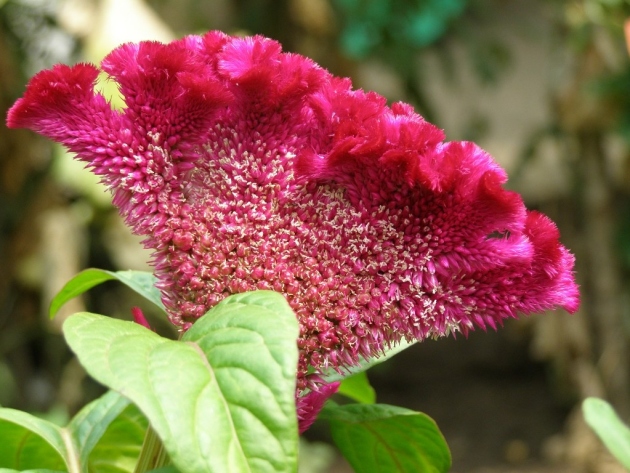
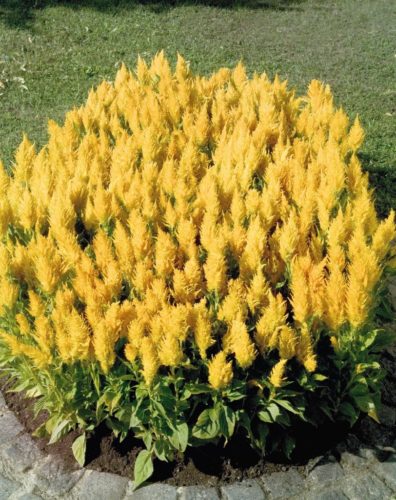

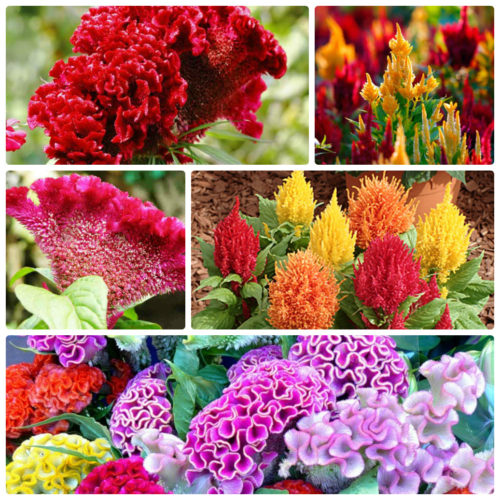
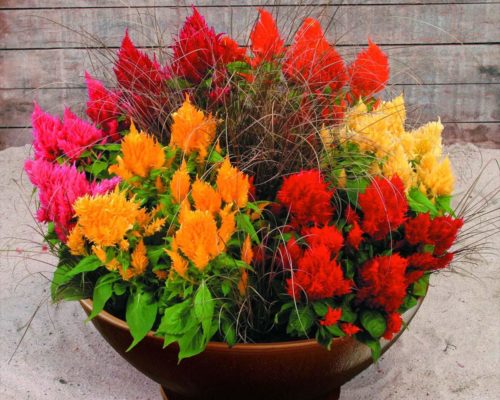
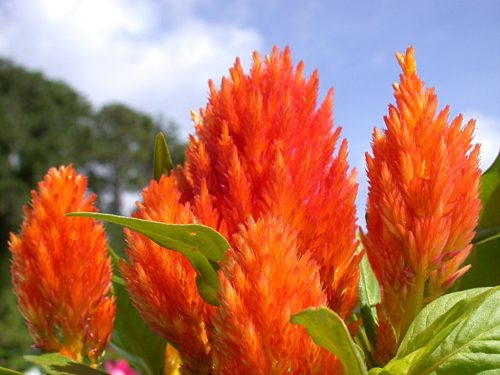

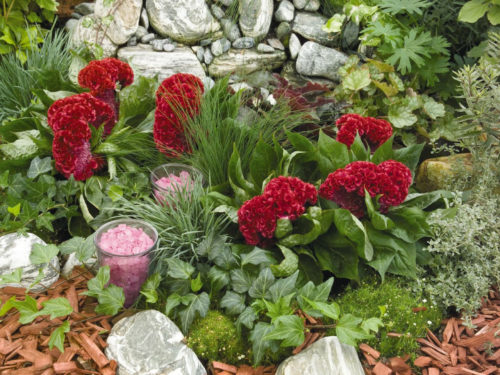
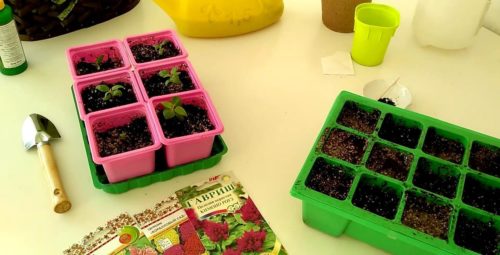
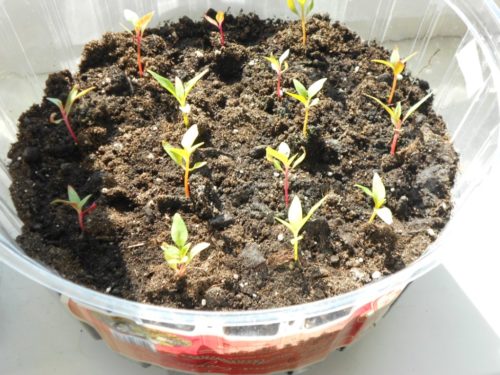
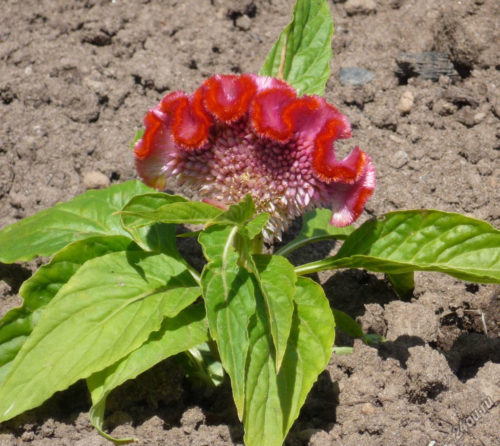
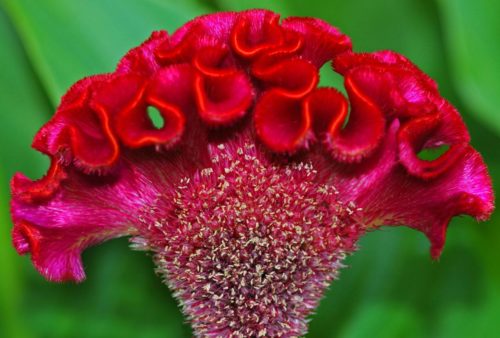
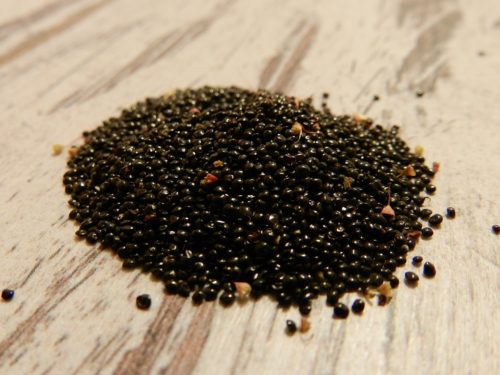

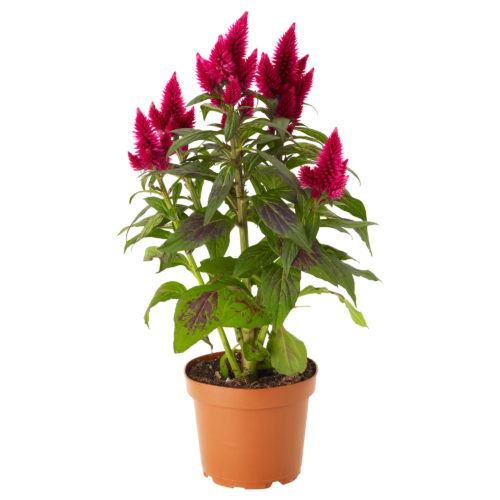












 Start a discussion ...
Start a discussion ...